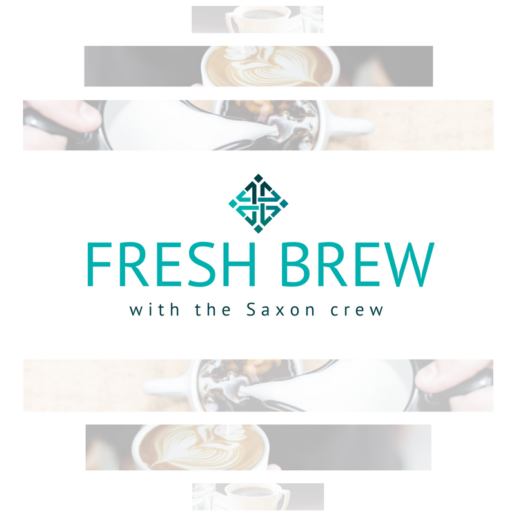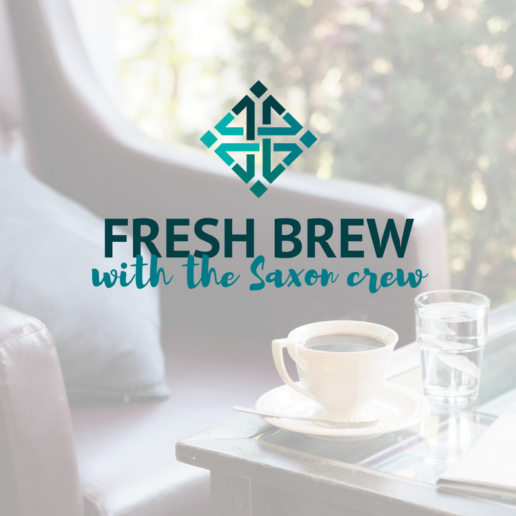Virtual walks and free chocolate? What workplace pros say the new office will look like
Working remotely has become a new workplace normal and may continue to be so. Although it may be difficult for younger generations to acclimate to this working situation, there may be some benefits to it as well. Read this blog post to learn more.
The traditional office’s days are numbered; the office of the future will be a “collaboration center” with a mix of skeleton staff and remote workers meeting through virtual team walks and group meals via home-delivered Zoom lunches.
Millennials and Generation Z will have problems networking in the new remote work world with fewer face-to-face meetings; and mental health and well-being benefits will become more important than ever before.
Those were some of the predictions of compensation and benefits professionals at the first virtual gathering of the WorldatWork 2020 Total Resilience conference — a digital substitute for an annual conference that was supposed to be held in Minneapolis this year, but was postponed in response to the global coronavirus crisis.
"The office environment will change,” said panelist Steve Pennacchio, senior vice president of total rewards at Pfizer, during an online session on resilience on Wednesday. “Remote work is here to stay.”
Pennacchio said a number of companies will shut down their office space, which will have serious ramifications for commercial real estate and new entrants into the workforce, who will be at a particular disadvantage because of the limits of networking and source building through remote technology.
He suggested more virtual engagement tactics, including virtual walks or group activities, including having teams eat together with coordinated deliveries of lunches or chocolate. “Nothing hurts with chocolate,” he said. During the conference, which will continue with weekly panels through Sept. 2, organizers also hosted social events, including virtual trivia games and online networking.
Pfizer is investing $1 billion on development of vaccines and treatments for coronavirus, he noted. “Hopefully ours and others will work. The world needs more than one,” he said.
Likewise, Susan Brown, senior director of compensation at Siemens, said her company has focused on four key areas of building a team, culture, management team and employees who can adjust to the new environment through virtual meet-and-greet sessions and lunches where all team members must be present visually.
“The relationship builds with seeing each other,” she said. “The camera on changes the dynamic more than a phone call.”
Brown also noted tremendous innovation around talent management happening during the coronavirus crisis. She said that progressive companies have made a quick shift to focus first on the mental health and well-being of staff as a priority, rather than having an emphasis on business metrics.
“The whole conversation changed to focus on people’s health and safely, how they were feeling and empathetic messaging rather than a focus on business results,” she said.
WorldatWork CEO Scott Cawood, who served as moderator, noted that employers’ responses are being closely watched by staff, and other companies.
“COVID-19 doesn’t define who you are; it actually reveals who you are,” said Cawood, sitting alone on a stage with a white chair and house plant, as panelists called in from around the country.
Kumar Kymal, global head of compensation and benefits at BNY Mellon, said the global financial services firm has 95 percent of staff working remotely.
"Times of crisis and change give us permission to rethink the way we do things, and it's an opportunity to decide what really matters to your organization," Kymal said, noting that the company announced that there will be no layoffs in 2020 to put staff at ease.
Management response should focus on “speed, speed, speed,” he said about responding to challenges under the coronavirus crisis, with special attention to empathetic corporate messaging.
Kymal said at his company, management focused on a new framework to address healthcare concerns globally, with a broad overview of their healthcare plans. Second, management focused on addressing stress and anxiety, particularly with attention to messaging and staff feedback. They also put an increased focus on well-being and resilience strategies, and accelerated a mental health program to allow employees to assess their ability to deal with stress. Finally, BNY Mellon improved social connections for managers to lead better on connecting with various teams.
Looking ahead to the return-to-work phase of the crisis, Kymal said the stakes are high. Challenges include dealing with temperature scans, wearing masks, closed cafeterias and social distancing.
“As we're starting to plan what the return to office looks like, it's clear to us it has the potential to become an awful, awful employee experience,” he said. “We really need to rethink and redesign. What does an office experience look like? That's front and center in my mind.”
SOURCE: Siew, W. (08 July 2020) "Virtual walks and free chocolate? What workplace pros say the new office will look like" (Web Blog Post). Retrieved from https://www.employeebenefitadviser.com/news/what-workplace-pros-say-the-new-office-will-look-like
Viewpoint: 12 Tips for Return-to-Work Communications
While employers begin to move their employees back into their offices, communication between team members may not be as strong as they were before working remotely. Read this blog post for helpful tips on communicating when returned to work.
While the move to working from home due to the COVID-19 pandemic happened quickly, the return to work will be slower and more complicated.
Employers that haven't made movement back to workspaces and office buildings should think carefully about the implications of the new six-feet-apart world. How will you handle an employee who refuses to wear a mask when required? When will you open the kitchens and make coffee and water available? How many people will you allow in a restroom at a time? Do people have to walk clockwise around the space? Where do you put hand sanitizer stations? Setting aside all of the logistics, how do and will employees feel?
Connect with Employees
Like any other workplace change, making sure employees are aware and understand this new world will be equally as important as the actual changes themselves. Training, education and effective communication are key to returning employees to the workplace.
Below are a number of tips to keep in mind as you communicate return-to-workplace situations:
- Develop a clear and detailed safe work plan, reviewing any policies that need to be updated.
- Write in plain, easy-to-understand language.
- Use images and diagrams where appropriate.
- Outline what building management is doing, how the company is supporting this effort and clear expectations for employees.
- Partner with legal counsel. They can help you steer clear of perceptions of discrimination and other potential employee relations or legal issues.
- Get input from your senior leaders. They should be knowledgeable and included well before you communicate to employees.
- Train your managers and supervisors on the safe workplan and what is expected of them. They are the front line of employee communications.
- Use different media to supplement a written plan. Hold a webinar and record it. Create a video, leverage your online employee portal, or do a podcast.
- Make good use of signs throughout the office to help with key behaviors, including directions to walk down aisles in one direction or to designate one stairwell for walking up and another for walking down.
- Be clear where employees should go with questions.
- Start communicating before workers are allowed (or expected) to return to the workplace, and keep communicating to address new issues and concerns as they arise.
- Explain that the situation is fluid and manage expectations by noting that when new information becomes available the plan will be updated. Communicate those key changes with leadership and employees.
Careful Not to Overdo It
Especially now, employees want to understand what you are doing to keep them safe and to believe that you care. But you don't want to overdo it, either. Whether it's due to a lack of trust or excess worry, some organizations are holding more meetings than usual to "check-in," which employees can find invasive and intrusive.
If "eyes on your employees" was your primary form of performance evaluation, you might be feeling unsettled in this new work-from-home arrangement. In most situations, you've likely hired responsible, talented people who want to, and will, do good jobs under any circumstance. Trust they will, and reward them when they do.
Tip: Let them dictate the check-in frequency. Be willing to tailor your approach to the communication needs of the individuals or groups. Then, over time, survey your employees and ask them how it's working, especially the frequency and content of communications.
Wherever you are along this journey, don't forget employees' needs have shifted and will likely continue to change. Be flexible and willing to adjust your communication approach constantly. Look for that Goldilocks communication approach—not too much, not too little, but just right.
SOURCE: Foster, D. (26 June 2020) "Viewpoint: 12 Tips for Return-to-Work Communications" (Web Blog Post). Retrieved from https://www.shrm.org/resourcesandtools/hr-topics/benefits/pages/12-tips-for-return-to-work-communications.aspx
How to Overcome Your Fear of Making Mistakes
During the time of the coronavirus pandemic, there could have been a rise of fear due to each scenario that has gone on around society. Many may feel as if they fear the missteps which may lead to making mistakes. Read this blog post for helpful tips on how to overcome fear.
The Covid-19 crisis and its fallout — including recession, layoffs, and uneven economic pain — as well as recent protests over police brutality and demands for racial justice have presented many of us with challenges that we’ve not encountered before. The high-stakes and unfamiliar nature of these situations have left many people feeling fearful of missteps. No one can reduce mistakes to zero, but you can learn to harness your drive to prevent them and channel it into better decision making. Use these tips to become a more effective worrier.
Don’t be afraid or ashamed of your fear.
Our culture glorifies fearlessness. The traditional image of a leader is one who is smart, tough, and unafraid. But fear, like any emotion, has an evolutionary purpose and upside. Your concern about making mistakes is there to remind you that we’re in a challenging situation. A cautious leader has value. This is especially true in times like these. So don’t get caught up in ruminating: “I shouldn’t be so fearful.”
Don’t be ashamed or afraid of your fear of making mistakes and don’t interpret it as evidence that you’re an indecisive leader, or not bold, not visionary. If you have a natural tendency to be prevention-focused, channel it to be bold and visionary! (If you struggle to believe this, identify leaders who have done just that by figuring out how to prevent disasters.)
Use emotional agility skills.
Fear of mistakes can paralyze people. Emotional agility skills are an antidote to this paralysis. This process starts with labeling your thoughts and feelings, such as “I feel anxious I’m not going to be able to control my customers enough to keep my staff safe.” Stating your fears out loud helps diffuse them. It’s like turning the light on in a dark room. Next comes accepting reality. For example, “I understand that people will not always behave in ideal ways.” List off every truth you need to accept. Then comes acting your values. Let’s say one of your highest values is conscientiousness. How might that value apply in this situation? For example, it might involve making sure your employees all have masks that fit them well or feel comfortable airing any grievances they have. Identify your five most important values related to decision-making in a crisis. Then ask yourself how each of those is relevant to the important choices you face.
Repeat this process for each of your fears. It will help you tolerate the fact that we sometimes need to act when the best course of action isn’t clear and avoid the common anxiety trap whereby people try to reduce uncertainty to zero.
Focus on your processes.
Worrying can help you make better decisions if you do it effectively. Most people don’t. When you worry, it should be solutions-focused, not just perseverating on the presence of a threat. Direct your worry towards behaviors that will realistically reduce the chances of failure.
We can control systems, not outcomes. What are your systems and processes for avoiding making mistakes? Direct your worries into answering questions like these: Is the data you’re relying on reliable? What are the limitations of it? How do your systems help prevent groupthink? What procedures do you have in place to help you see your blind spots? How do you ensure that you hear valuable perspectives from underrepresented stakeholders? What are your processes for being alerted to a problem quickly and rectifying it if a decision has unexpected consequences?
Broaden your thinking.
When we’re scared of making a mistake, our thinking can narrow around that particular scenario. Imagine you’re out walking at night. You’re worried about tripping, so you keep looking down at your feet. Next thing you know you’ve walked into a lamp post. Or, imagine the person who is scared of flying. They drive everywhere, even though driving is objectively more dangerous. When you open the aperture, it can help you see your greatest fears in the broader context of all the other threats out there. This can help you get a better perspective on what you fear the most.
It might seem illogical that you could reduce your fear of making a mistake by thinking about other negative outcomes. But this strategy can help kick you into problem-solving mode and lessen the mental grip a particular fear has on you. A leader might be so highly focused on minimizing or optimizing for one particular thing, they don’t realize that other people care most about something else. Find out what other people’s priorities are.
Recognize the value of leisure.
Fear grabs us. It makes it difficult to direct our attention away. This is how it is designed to work, so that we don’t ignore threats. Some people react to fear with extreme hypervigilance. They want to be on guard, at their command post, at all times. This might manifest as behavior like staying up all night to work.
That type of adrenalin-fueled behavior can have short-term value, but it can also be myopic. A different approach can be more useful for bigger picture thinking. We need leisure (and sleep!) to step back, integrate the threads of our thinking, see blindspots, and think creatively. Get some silent time. Although much maligned, a game of golf might be exactly what you need to think about tough problems holistically.
Detach from judgment-clouding noise.
As mentioned, when people are fearful they can go into always-on monitoring mode. You may have the urge to constantly look at what everyone else is doing, to always be on social media, or check data too frequently. This can result in information overload. Your mind can become so overwhelmed that you start to feel cloudy or shut down. Recognize if you’re doing this and limit over-monitoring or overchecking. Avoid panicked, frenzied behavior.
On its own, being afraid of making mistakes doesn’t make you more or less likely to make good decisions. If you worry excessively in a way that focuses only on how bad the experience of stress and uncertainty feels, you might make do or say the wrong things. However, if you understand how anxiety works at a cognitive level, you can use it to motivate careful but bold and well-reasoned choices.
SOURCE: Boyes, A. (24 June 2020) "How to Overcome Your Fear of Making Mistakes" (Web Blog Post). Retrieved from https://hbr.org/2020/06/how-to-overcome-your-fear-of-making-mistakes
Best tools to support your remote workforce
The coronavirus pandemic has brought many strains onto the workforce, and some are caused by the fact that employees are now having to work from home. Although working from home can come with benefits, it can also create challenges that weren't noticed before. Read this blog post to learn more.
The remote workplace comes with a lot of benefits — including increased productivity and better focus. But it’s also causing challenges to both employees’ mental and physical well-being.
Disruptions from the coronavirus have infiltrated the daily lives of employees. Everything from proper nutrition to child care and financial concerns are major focus points to many.
Many companies are now stepping up their efforts to adapt their benefit offerings to support employees who work from home. Employers are considering options like work-from-home office policies and stipends, ergonomic workplaces at home or mental health and telemedicine checks.
From virtual fitness memberships and snack boxes to tech tools and online wellness resources, here are some of the best tools employers can provide to support their remote workforce.
Free food at home
While almost everyone is working from home, many employees have lost a popular office perk – free food. That’s why Stadium, a New York City-based group lunch delivery company, introduced a new service in early June where employers can have snacks delivered nationwide to any home office. The service, called SnackMagic, lets employees choose individual snacks and beverages that they like within a gift budget set by the employer.
The coronavirus has also exacerbated the challenge of accessing healthy food and proper nutrition for many across the United States. To address those concerns, meal subscription company Freshly created a new service called Freshly for Business to provide healthy and affordable meals for employees working remotely. The program allows employers to offer free or subsidized meal plans consisting of up to 12 meals per week. Employers including PwC and KPMG, among others, are partnering with Freshly, which costs an average of $8 per meal per employee.
Mindfulness and stress management
As a result of these circumstances, Unplug Meditation, a Los Angeles-based drop-in meditation studio and app, is seeing a surge in corporate programs, and has partnered with companies including Disney, Mattel and Google. The app offers everything from virtual meditation and sound bath sessions, to team building, stress management and customized wellness programs.
Chill Anywhere, a mindfulness and meditation app, is built specifically for the workforce, and provides live mindfulness video practices. It can be offered as an employee benefit or part of an organization's Employee Assistance Program. App users can track their mood before and after each session to see how their mindfulness practice impacts their day-to-day lives.
Financial wellness
As the pandemic sends shockwaves through the U.S. labor market with layoffs, pay cuts and furloughs, employers are making efforts to support the financial security and resiliency of their employees.
SmartPath, a financial counseling platform, launched a free online resource called the Money Moves Quiz to help employees build confidence and a secure financial plan by answering 15 questions about their current situation. The questions cover topics such as levels of emergency savings, home ownership or employment status. Based on the answers, SmartPath will provide a clear financial plan tailored to the employee’s needs.
In March, Alegeus, a consumer-directed healthcare solutions company, introduced a new offering called the Employee Care Card, a debit card that enables employers to offer targeted financial support for employees to address their most immediate needs during the pandemic. Employers determine the amount they wish to contribute per employee, as well as the type of eligible expenses they want to allow — from groceries and home office supplies to educational supplies. Unlike cash or gift cards, employers control how the dollars can be spent, preserve unspent dollars and gain real-time insight into employee spending trends.
As head of an HR tech company and mother of two and CEO from another employee benefits firm, felt the effects of this firsthand. That’s why she decided to offer Outschool.com, an online education platform for children ages 3 to 18, as a benefit to her employees. Outschool offers classes on subjects ranging from life skills, arts and music, to math, coding and science.
Screen Sitters, a virtual child care service connecting sitters with families to entertain children via live 1:1 video, is another service offering overextended working parents some relief. Employers can get flexible packages that integrate into their existing benefits programs. All of the company’s sitters are vetted through a 5-point screening process to ensure safety and a hassle-free transaction for the parents. Children get a personalized experience, as the sitter plans sessions ahead of time based on each child’s personal interests.
This summer, a virtual camp experience is what many facilities and families are choosing to keep their kids safe. Anna Birch, a 23-year summer camp veteran has replaced her usual summer adventure camp programs with an online alternative. The new resource, called The Camp Cloud, provides children ages 6 to 17 with the opportunity to make new friends and engage in guided activities led by institutions like science centers, museums, zoos and aquariums, schools and theaters, without need for significant parental assistance.
Team building
Summer is typically a time when companies plan team outings, parties and activities to give employees an opportunity to bond outside the office. But with COVID-19 taking a toll on group activities, many of those events are now cancelled.
HealthKick, a corporate wellness program, provides a personal well-being hub for companies and their employees to participate from home. From using in-home workout services to taking cooking classes over Skype with meal delivery kits, teams can take advantage of many different activities this summer that they can do together from their new work-from-home offices.
Mental health resources
Employee mental health is a workplace crisis, with many employees experiencing increased anxiety and depression during the pandemic. To address care accessibility issues — including in-person sessions and treatment — imposed by COVID-19, many employers are offering employees access to mental health care online.
Healthstat, a provider of virtual employer-sponsored health centers, is offering a virtual mental health solution, Ment4Me, that helps employers improve access to high quality mental health services for employees who are seeking support for treatable mental health conditions. Ment4Me aims to help reduce the stigma that can often be associated with mental illness. It’s also using artificial intelligence to offer the chatbot “Tess,” a provider of on-demand mental health support.
Mental health benefits provide Happify Health has designed a new program for employees and health plan members to remotely access mental health resources to meet the recent surge in demand. Happify Connect is a part of the organization’s selfcare platform and allows employees to connect with mental health care that is more conducive to the current work-from-home environment. The program directs employees to mental health resources, including self-guided tools within the Happify platform, higher-touch care through integrated partners such as online therapy and a mental health provider directory.
Supportive, a mental wellness support platform, offers 24/7 chat-based peer support on any emotional well-being topic ranging from depression, anxiety and loneliness to daily life struggles like parenting, relationship conflicts or stress and burnout. Users answer the question "what's your struggle?" for Supportiv to analyze and auto-match them to a small group of peers who relate. Each group has a live moderator to guide the chat, make sure each user's needs are met, and vet the personalized resources that appear as hyperlinks in real-time. It can be deployed as a dedicated web link, integrated into an EAP, or embedded as a chat window that appears on any existing benefits portal.
Physical well-being
With gym closures disrupting wellness benefit offerings as well as employees’ workout routines, employers are now looking to virtual solutions.
Earlier this spring, Virgin Pulse, a global provider of digital wellness and wellbeing solutions, launched a dedicated COVID-19 hub to provide employees with resources — ranging from webinars to blog posts — on fitness and nutrition. It aims to help employees build and maintain healthy routines by reducing stress, staying active, being productive, eating healthy and sleeping well. The hub is a resource app for Virgin Pulse users, but also gives free access to health and wellbeing content, programs and resources.
BurnAlong is an online video health and wellness platform where employees can take classes from a network of hundreds of instructors across 45 categories ranging from cardio and yoga to stress, chronic conditions and diabetes. They can take classes alone, or invite friends and colleagues to join them live online for social motivation. The platform, which is used by companies, hospitals, insurers and brokers, is partnered with on-site and local gyms, studios, instructors and wellness professionals to help people achieve their health and wellness goals.
An ergonomic workplace
With employees using everything from their kitchen table to their couch as their workplace, working from home sometimes brings bad ergonomic habits and solutions.
Bad ergonomic habits, if left unaddressed, could mean higher healthcare costs for the employer, lower productivity and the increased potential for an employee to sustain a medical condition.
To be mindful of employees’ who don't work out of an office too, some employers are reimbursing them for remote office furniture.
Livongo, a digital health services company, is offering its remote workers reimbursement for ergonomic and job essential furniture. With the whole company being remote during the pandemic, the office furniture reimbursement benefit was extended to all employees to help make their home offices more efficient. Even before the pandemic, Livongo had a strong remote workforce with more than 1/3 of its employees working remotely. The company says taking the time to set up a workplace that is safe, comfortable and limited from distractions is important for employees to help manage their time and well-being.
SOURCE: Nedlund, E. (19 June 2020) "Best tools to support your remote workforce" (Web Blog Post). Retrieved from https://www.employeebenefitadviser.com/list/best-tools-to-support-your-remote-workforce
Remote Workers Experiencing Burnout
With many employees working remotely, productivity may decrease and the feeling of being burnt out may increase. As working remotely continues to draw out through many months, many employees may continue to feel this way, as well. Read this blog post to learn more.
Recent polling shows a significant share of the U.S. workforce is feeling burned out after more than two months of working from home during the coronavirus outbreak.
About half of 1,251 respondents in a survey conducted in May by job-search and careers website Monster said they were experiencing burnout. Even before COVID-19 upended workers' lives, the World Health Organization had classified burnout as an "occupational phenomenon" and a hazard.
"The COVID-19 pandemic has changed how we work, where we work, resulted in clashes between our work and home lives like we've never had before, and really has become a big stressor," said Melissa Jezior, president and CEO of Eagle Hill Consulting, a Washington, D.C.-based management consulting firm.
Binita Amin, a clinical psychologist in Washington, D.C., warned that the dangers of burnout are typically greater than just feeling stressed. "Stress is something that is resolved and has some sort of closure, and with burnout there's no real end in sight, so it's significant and chronic in nature," she said. "What happens over time is you start to see that a person's mental, physical and emotional resources are exhausted and depleted. In the work context, you can see it in terms of decreased productivity, difficulty concentrating, and certainly feelings of disillusionment or cynicism."
In a survey of 1,000 workers polled by Eagle Hill in April, 50 percent said they feel less connected to colleagues, 45 percent feel less productive, and 36 percent feel less positive about their careers.
The particular stressors brought on by COVID-19 include overworking and adapting to new ways of working; caring for children in the absence of school or day care; job insecurity; health concerns; isolation; and the lack of clear boundaries between work and home, said Vicki Salemi, a careers expert for Monster based in New York City. "People have also lost many of the ways they used to manage stress, such as spending time with friends, going to concerts and sporting events, and going to the gym," she said.
The Monster poll did find that almost three-quarters of respondents (71 percent) are making an effort to take time for themselves during the workday, such as taking a break or going for a walk. But over half of respondents (52 percent) said they are not planning to take extended time off or vacation despite facing burnout.
Salemi said that people may be reluctant to book a vacation because of financial reasons, the fear of being perceived as not being productive, or concerns about public safety. "Some people are just not ready to go to the beach, while other destinations, like amusement parks, are not really open for business," she said.
"Even if you're not going anywhere, you earned PTO [paid time off], and you should take it," she encouraged. "Using PTO doesn't necessarily mean you have to get on an airplane and fly away somewhere. It can mean taking a staycation. Perhaps people are thinking, 'Well, I'm already home, and I don't need a staycation,' but the reality is that we all need to log off."
She said there are ways to creatively take PTO, such as taking off every Monday or Friday in the month of July, for example.
Employers' Role
Employers can play a big part in helping address burnout among their employees, experts said. Affinity groups and employee assistance programs should be promoted as helpful resources, but there's even more that managers can do, according to Amin. "There's real opportunity to empower your employees to feel more sense of control over things like schedules, workload and types of work assignments, and even influencing things like meaningful connection," she said.
Lack of control is a prime factor of burnout, Jezior said. "Right now, there is a lot outside of our control. But I think one way we can help ground employees is to give them the autonomy and the ownership over how and when they complete their work."
Salemi recommended getting feedback from employees about their workload and work-from-home processes to make sure expectations are aligned and they feel supported. She stressed that managers and leadership should lead by example and encourage employees to take advantage of flexible work options.
"Make an announcement to the team or the organization that it's OK to take time off, even without having someplace to travel to," she said. "Encourage them to take time off."
SOURCE; Maurer, R. (29 May 2020) "Remote Workers Experiencing Burnout" (Web Blog Post). Retrieved from https://www.shrm.org/hr-today/news/hr-news/pages/remote-workers-experiencing-burnout.aspx
5 Ways to Demonstrate Your Value — Remotely
When working remotely for an extended amount of time, many employees can feel as if they are not visible to the organization. Read this blog post for helpful tips on how to show value, while working remotely.
With unemployment levels at the highest since the Great Depression, many individuals don’t have the privilege of working, and those who do feel nervous about how long they’ll have that opportunity.
If you fall into the latter category, I can appreciate your very legitimate concern. Many companies are struggling to bring in revenue, let alone turn a profit. And with remote working arrangements, you don’t have the visibility with your colleagues and managers that you normally would. When you were in the office, you might have had informal interactions with these individuals multiple times a day. Now, if you don’t have a meeting on their calendar, you may wonder if they remember your presence — and more importantly, your importance to the organization.
I can’t guarantee that your position is secure, and there will certainly be factors outside your control. But there are ways that you can make yourself and your accomplishments more visible to your organization, even when you’re not in the same building. The following suggestions are five concrete steps that you can focus on right here, right now, to increase your odds of thriving in your job during this tumultuous time and demonstrating your value while working remotely.
Do Your Work
Getting your work done is always a good idea. But especially in times where businesses and organizations are having to make hard decisions about who to keep, doing your work — and doing your work well — is essential.
As a time management coach, I’ve been working with clients throughout this time of uncertainty. (Thankfully, I was already remote!) And the sense I am getting is that there was a grace period in March and part of April as individuals were adjusting to working from home. Managers were more forgiving if there was a dip in productivity or missteps here and there. But now that it’s been multiple months of remote work, higher standards of output are returning. If you haven’t done so already, put a system in place for keeping track of your tasks and ticking them off, even if your schedule is modified because you have other responsibilities at home.
Tell Others
I don’t recommend that you give yourself a shout out at every single meeting, and I definitely don’t advise that you take undue credit for others’ work. But if you have accomplished something significant, share it. That could look like covering a few highlights of your work with your boss each week, either in your one-on-one or through email. Or speaking up in a meeting to share about what your team is doing. Or even giving a presentation on some best practices that could help other colleagues in a similar role. Focus on not only what you did but how it produced positive results for your organization. This is not bragging but simply informing others about how, even though they might not see you working, you’re getting great things accomplished. And this gives you increased visibility across the organization as people understand the role that you fill and the value you add.
Help Your Boss
Although you don’t want to overload yourself with extra work to the extent that you burn out or can’t keep your commitments, look for ways to make your boss’s life easier. For instance, turn in your work early so your manager has extra time to review it before a meeting, or be extra prepared in your one-on-one meetings so they are as concise and effective as possible. These little things help reduce the pressure on your boss, so they are not worried about whether you’ll deliver and if you’re on top of your work. And if you have extra capacity, offer to help with extra assignments or take work completely off of your manager’s plate. This shows that you’re not only someone who gets their work done but also someone who takes initiative. Although your immediate supervisor doesn’t always have a say in layoff decisions, if they do, they’ll put in a good word for you if you’re making things easier for them.
Play Nicely
With my clients, one of their least favorite ways to spend their time is in brokering arguments between people on their team. It drains energy, and they generally consider it a waste of time.
Spread Positivity
One very unfortunate outcome of this season is that it’s brought out some very anti-social behavior in people. Many people’s response to their own fear is controlling others. I’ve seen more vicious online behavior and more people yelling at strangers in public in the last two months than I’ve seen in my entire life. And since the biggest subject on most people’s minds and on all media coverage is Covid-19 — an anxiety-producing topic for most — the air has been tainted with the stench of negativity.
As a bonus, if you can be humorous, do so. Laughter and positive energy draw teams together and make people feel good about being around you. While doing good work and being a positive presence doesn’t guarantee your position will make the cut as you face layoffs, it does increase your odds because you’re demonstrating your value to the organization and the people around you.
Much of what happens with the job market and your particular job will be out of your hands. You can’t control what businesses are considered essential or not, nor can you control organizational changes and headcount. And there are many factors in place that determine the market demand for your work. However, if you follow the five pieces of advice above, you will do what you can to make the most impact and get credit for it within your current role. And you’ll make a positive impression in the process.
SOURCE: Saunders, E. (01 June 2020) "5 Ways to Demonstrate Your Value — Remotely" (Web Blog Post). Retrieved from https://hbr.org/2020/06/5-ways-to-demonstrate-your-value-remotely
People Analytics Guide Return-to-Work Choices
With many workplaces beginning to return to work, many leaders are using analytic tools to make decisions regarding staff easier. Read this blog post to learn more.
Human resources leaders are turning to people analytics tools to help make difficult decisions as their staffs return to the workplace and face a damaged economy. Whether it's figuring out how to keep workers safe, making decisions on furloughs and layoffs, or ensuring the right number of employees are in the right roles, these technologies collect, blend and analyze people data to guide HR leaders in their "what if" scenario planning.
Research shows the use of people analytics software was on the rise even before the coronavirus crisis hit. Now experts say many HR leaders are doubling down on the use of those tools.
Platforms Integrate Data
People analytics platforms fall into a number of categories. One group can help users integrate and analyze the diverse data sets related to COVID-19 and the composition of their workforces. They help answer questions like which people in key roles can go back to the workplace and which should continue working remotely; assist in developing first- and second-level succession plans in case workers get sick or need to step away to assist family members; and help align workforce planning with shifting business strategy and uncertain revenue forecasts.
AON is one vendor with an analytics tool that helps HR leaders think through workforce costs amid COVID-19. The London-based company's Talent Modeler platform can help determine the impact of shift reductions or help leaders choose from a range of options such as furloughs, attrition, pay cuts or layoffs.
Experts say sophisticated people analytics also can help leaders evaluate alternatives to layoffs, such as hiring or promotion freezes, shortened work schedules, or reducing costs like real estate expenses.
Nicholas Garbis, vice president of people analytics strategy for One Model, a people analytics provider with offices in Austin, Texas, has seen an evolution among HR leaders he's spoken to throughout the COVID-19 outbreak. As organizations begin their return-to-work planning—which largely entails addressing employee fear of COVID-19 infection as well as monitoring the reopening of child care centers—more are now planning for the "what if" scenarios that will arise this summer, he said.
This coming phase requires HR leaders to have better data and insight into the state of their current workforce and how it may need to change in the short term. "You need to be able to accurately assess your capacity, starting with the kind of workforce gaps that may have emerged from early March to now," Garbis said. "What talent have you lost, for example, to furloughs, layoffs or health issues?"
One Model's analytics platform collects and blends diverse forms of people data into a unified model to help surface these kinds of insights. HR should examine the state of "talent segments" in the organization as well as gauge potential coronavirus risks, Garbis said, then create a short-term strategic plan to define future workforce needs.
"HR business partners should be consulting with business leaders right now to say, 'This is the mix of people and roles you have now. What might you need your workforce to look like in six to 12 months?' " he said. "You want to ensure you're growing where you're supposed to grow and shrinking where you want to shrink."
People analytics also can help redeploy employees to areas experiencing increased demand. Ian Cook, vice president of people solutions for Vancouver, British Columbia, Canada-based Visier, said a financial services company he knows was considering furloughing employees in one area of its business until it experienced a spike in another area—life insurance sales. "That allowed them to move some front-line customer service people over to selling life insurance policies," Cook said.
In another case a regional bank used analytics to decide to move a call center to shift work and parallel work teams with physical distancing, said Bhushan Sethi, joint global leader, people and organization for PwC, a research and consulting firm in New York City.
"The goal was to help manage call center capacity and infection risk," Sethi said. "Almost 50 percent of CFOs in a recent PwC survey said they would have to implement some form of shift work when they bring people back to the workplace."
Employee Coaching Analytics
Employee coaching tools can give managers and employees feedback on how their communication or management styles have changed as a result of remote working arrangements. One vendor in the space is Cultivate, which creates reports that give employees a summary of their digital behaviors at home.
"These analytics could show managers, for example, how responsive they've been to certain employees in the work-from-home setting or how much overall time they've spent with certain workers," said Stacia Garr, co-founder and principal analyst of RedThread Research, a human capital research and advisory firm in Woodside, Calif.
Measuring Inclusion During Remote Work
This category of analytics can help HR understand how remote work is impacting leadership development, performance-based promotions or the inclusion of diverse employee populations. Some experts believe, for example, that a remote working environment can make it easier for implicit or unconscious bias to take root.
"We know that people's networks have contracted as a result of remote work, and there also can be less insight into employee performance," Garr said. "When we aren't seeing each other in person as often and aren't as aware of what others are doing or thinking, it can open the door to unconscious bias and stereotyping."
Organizational network analysis technology can track employees' connections to give HR a better understanding of how remote workers are interacting during COVID-19, Garr said. "The tools can give you an indication of who is being included in conversations, who is on e-mail threads and who is being invited to meetings. It can help you see if people across the organization are being included on an equal basis." Some of these vendors include TrustSphere, Polinode, Innovisor and OrgAnalytix.
Employee Surveying and Sentiment Analysis
Many companies are deploying employee listening tools to stay abreast of how workers are feeling at home and to gauge their sentiment on returning to the workplace. Platforms like Qualtrics, Yva, Perceptyx and Limeade offer such survey tools, some of which include artificial intelligence capabilities to make it easier to compile and analyze survey results.
"Organizations are using these surveys to measure employee feelings about a return to the workplace, with the understanding that not everyone is of the same mind about that return," Garr said. Such surveys sometimes ask employees to register their preferences for a return to the workplace. Might they want to work certain shifts or travel into the office on certain days, for example, and work other days at home?
COVID-Specific Employee Health and Safety Tracking
Some people analytics have adapted to allow HR leaders to merge publicly available COVID-19 data with their internal people data to assist in workforce planning. Visier integrates COVID-19 data sources and automated analysis to help users make more-informed decisions related to staffing.
Visier's database allows leaders to see which of their employees are in areas most impacted by the coronavirus and helps to manage business continuity challenges.
"We've layered the latest COVID-19 case data into the application so business users can see by geography how deeply the virus has gone into their populations and can view projections from the University of Washington model about peaks and changes in various states," said Visier's Cook.
SOURCE: Zielinski, D. (22 May 2020) "People Analytics Guide Return-to-Work Choices" (Web Blog Post). Retrieved https://www.shrm.org/resourcesandtools/hr-topics/technology/pages/people-analytics-guide-return-to-work-choices-coronavirus.aspx
Virus impact may extend to 57 million U.S. jobs
Did you know: the coronavirus pandemic has caused more than 26 million employees to file for unemployment. As the coronavirus continues to spread, many employees are still at a loss for jobs. Read this blog post to learn more.
The coronavirus pandemic will hurt 57 million U.S. workers, more than double the number of jobless claims so far, once furloughs and reduced hours and pay are included, according to McKinsey.
The more than 26 million people who have filed unemployment claims in the past five weeks provide only a partial picture of workforce dislocations, with tens of millions more facing additional risks, according to a report by economists including Susan Lund at the McKinsey Global Institute, the think tank arm of the consultancy.
The earliest wave of unemployment claims in mid-March disproportionately hit the food service, entertainment and hotel industries. The disruption has since moved into categories including retail, business services, manufacturing and non-essential health care.
There’s significant overlap between workers who are vulnerable because of the virus and those whose jobs were already at risk from automation, providing a challenge for the U.S. to train at-risk employees for more sustainable job opportunities.
Low-wage, part-time and minority workers are the most likely to be hurt by the pandemic, with 74% of at-risk jobs paying less than $40,000 a year, according to McKinsey’s analysis. But the number of full-time and white-collar positions being affected is rising, with 16% of vulnerable workers making more than $70,000 a year.
“It’s really the people who are generally lowest paid, less educated and least prepared to weather a spell of unemployment that are most at risk,” Lund said in a phone interview.
Education is the strongest demographic predictor of vulnerability, with people who don’t have bachelor’s degrees twice as likely to hold such jobs.
Companies can help by reducing hours and temporarily furloughing workers rather than firing them, McKinsey said. They also should offer greater flexibility to parents working from home and find ways to reconfigure office spaces to prevent a new virus outbreak. State workforce agencies can help provide training and education opportunities for the unemployed, McKinsey said.
SOURCE: Martin, E. (01 May 2020) "Virus impact may extend to 57 million U.S. jobs" (Web Blog Post). Retrieved from https://www.employeebenefitadviser.com/articles/virus-impact-may-extend-to-57-million-u-s-jobs
Strategies for making layoffs a last resort during a crisis
Did you know: 6.6 million Americans have applied for unemployment due to the coronavirus pandemic. Many businesses are looking for other alternatives than automatically laying off their employees. Read this blog post to learn more.
In uncertain times business leaders can be faced with an impossible choice, keep every employee or keep their business afloat.
More than 6.6 million Americans have applied for unemployment, according to the Labor Department and there have been over 10 million jobless claims, as a result of the coronavirus pandemic keeping people in their homes and out of work. It is likely that businesses will make further cuts as the latest PwC survey suggests 44% of CFOs expect furloughs and 16% expect layoffs.
The unfortunate reality for many small businesses is that there typically isn’t an alternative to layoffs, but larger organizations have more options.
“There are several firms in the U.S. right now, including our own, that have publicly said layoffs are a last resort,” says Bhushan Sethi, PwC’s global people and organization leader. “What they are looking to do is be creative with the different levers you can pull around the workforce.”
Sethi in a recent interview shared ways in which employers can make layoffs a last resort in times of unpredictability.
How can businesses avoid layoffs during a crisis?
There’s looking at compressed work schedules, reducing costs in other areas, including real estate or business travel. There are other benefits employers may be offering that are not relevant like a car allowance or a travel allowance. Even before COVID-19 we’ve seen clients take a look at a compressed work schedule. Employers need to understand what it means if they offer a compressed work week, whether it is 40 hours across four days or in some areas it might mean one week on, one week off. So the compressed work weeks can take on different forms. Changing the pay would be next, and looking at the areas of your firm that have significant costs and looking at where value is created. What that could mean is changing the mix of pay at the executive level. Certain companies have come out and froze or capped executive pay or said executives won’t take bonuses. So there’s different levers on the compressed work schedules and on the pay models and then there are other kinds of cost control measures you can take.
How are employers designing benefits during this time?
In our CFO survey we saw that 56% of them were also looking at other benefits, specifically things like paid time off and sick leave. A number of them are saying “how do I design benefits around what my people want?” At PwC we said we’re going to give an emergency child care allowance to people who need it for $2,200. We’re seeing this shift around what you can offer your employees from a benefits perspective that might be very relevant to them. I’ve seen other clients say “well if there is a small piece of equipment that will help you with remote working like investing in a different shaped chair or something like that,” it seems trivial but it's really important to people’s experience right now.
How can employers reassure their remaining staff when they have to make staffing cuts?
It’s still an opportunity for firms to start planning beyond just today’s business. You’ve got to project out maybe 12 months and say what will my revenue and my profitability be, based on some assumptions being made around the business. The more you can get employers to actually think about kind of financial impact then you can walk it back and say okay, I‘ve got to ask about the costs I need to manage and how can I be creative by not just looking at payroll and salary and benefits, but how can I think about other levers I can pull? Can I offer sabbaticals to people? Can I do compressed schedules? Can there be job sharing in certain key rolls? Looking at all the different levers around it is going to be important because then you may actually get to a decision that is more beneficial for your employees, for society, and your business because you won’t be in the process of having to lay off a significant amount of people and cause reputational damage to the business.
SOURCE; Shiavo, A. (13 April 2020) "Strategies for making layoffs a last resort during a crisis" (Web Blog Post). Retrieved from https://www.employeebenefitadviser.com/news/strategies-for-making-layoffs-a-last-resort-during-a-crisis
Fresh Brew With Olivia Childs
Welcome to our brand new segment, Fresh Brew, where we will be exploring the delicious coffees, teas, and snacks of some of our employees! You can look forward to our Fresh Brew blog post on the first Friday of every month.
“Be sure to do the follow-up after a conversation! Clients want to know they are understood and have options.”
Olivia Childs is a Senior Solutions Specialist.
New to the insurance industry, Olivia hopes to expand her knowledge in Medicare Insurance. She graduated from the University of Cincinnati with a degree in Organizational Leadership. She was involved in the Human Resources department and a member of HR Succeeds, a mentor program with professionals and students.
Olivia has been volunteering her free time at the Cincinnati Epilepsy Foundation since High School and her favorite catchphrase is, “We rise by lifting others,” by Eleanor Roosevelt.
Olivia will marry her fiance, Cory, in June 2020. They enjoy hiking and cycling together, as well as have two cats, Braun & Gus.


Chia Tea Latte
Olivia loves to drink her favorite brew, Chai Tea Latte, while at Half Day Cafe!

Everything Bagel
Olivia loves sipping on her favorite brew, a Chai Tea Latte, while snacking on an Everything Bagel!











